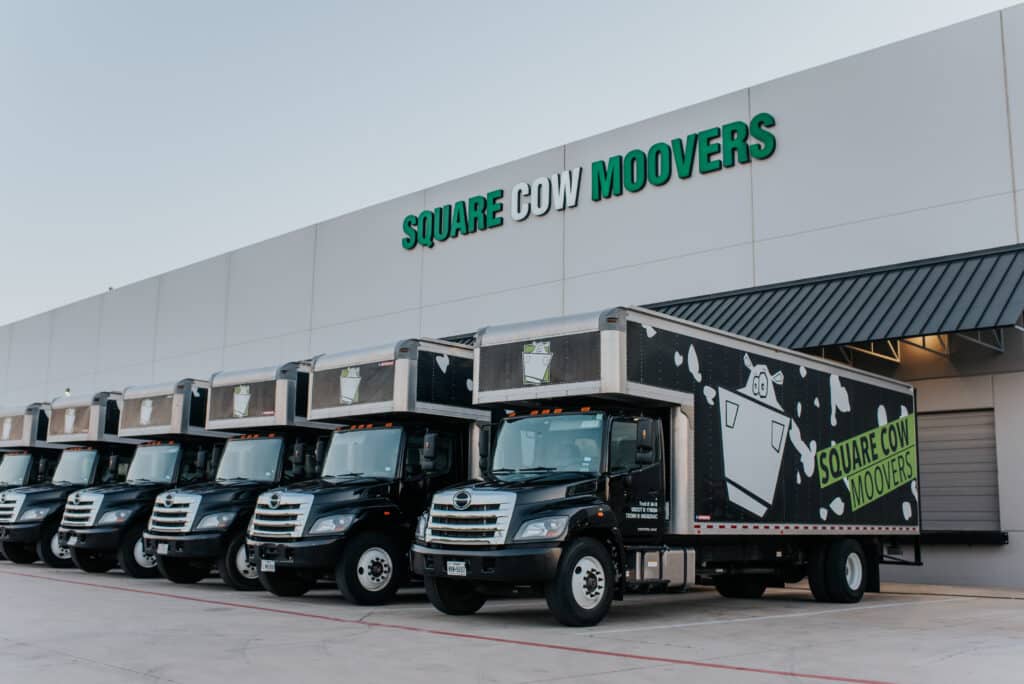Learning how to move in the snow can save you from costly property damage, serious injuries, and the stress of delays. Whether you’re a first-time mover or someone who has experienced the frustration of slippery hazards, you can apply these strategies to protect your family and possessions when moving during winter conditions.
How to Move in the Snow
To move in the snow, consider hiring professional movers who specialize in winter conditions and monitor the weather forecast. Apply strategic packing techniques using quality packing materials and plastic sheeting to protect floors. Be sure to clear icy pathways with shovels, dress in layers, drive cautiously, and check that your basic utilities in your new home are working.

When we expanded our operation to offer moving services in Denver, we quickly learned a lot of tricks for working around frozen precipitation. While you can’t control the weather on a moving day, these tips for safety protocols, equipment needs, and professional moving services will provide you with a successful relocation.
1. Hire Professional Help
Hiring a moving company will limit the time you have to spend out in the frigid cold and decrease your chances of injury. Our professional movers are equipped with the necessary equipment. This enables us to safely navigate the challenges of a snowy move and handle your belongings with care.
2. Confirm Details to Prepare for the Winter Storm
Moving is considered off-season during winter, requiring scheduling flexibility. Keep a check on the forecast for the three to five days leading up to the move. Wait and confirm planned street or sidewalk clearing schedules.
3. Pack Strategically and With Extra Caution
Certain plastics, china, and crystal become brittle in the cold and can break. Some things, like canned goods and electronics, can burst in sub-freezing temperatures when left in a cold vehicle. Safeguard fragile items and electronics from condensation by packing them in the car, where you can control the heat.
4. Cover Objects and Pathways Using Plastic Sheeting
You can use plastic sheeting to cover the flooring as you go in and out of the loading truck, so you aren’t left with a mess to clean up. Adding another layer of plastic sheeting over the door and its surrounding frame can help keep moisture from getting inside your home during the move. Plastic sheeting can also be used to cover paintings, wood furniture, and other moisture-sensitive items.
5. Clear Icy Pavements and Access Points
According to the Centers for Disease Control and Prevention, around one million Americans are injured each year from falls on ice and snow, with approximately 17,000 of these falls being fatal. Before the movers show up, use your shoveling supplies to remove snow and lay down a layer of sand or salt. Clear the walkways, driveway, and street in front of your home.

6. Use an Assembly Line Approach
Instead of having everyone handling boxes in and out of the house, it may be better to use an assembly line approach. When there are no movers to help you, arrange your system so people inside can hand off boxes and items to people outside faster. Switch out who works outside and inside so everyone gets a chance to warm up.
7. Plan Your Route to Avoid the Iciest Areas
Sleet and frost can have a big effect on roads. You’ll want to carefully plan out a route that avoids the worst areas. For example, steer clear of flyovers and bridges since they get iced over easily.
8. Prepare Your Vehicle
Prevent vehicle breakdown with a tune-up covering ignition, fuel, and heating systems. Install snow tires for traction and don’t wait for an accident to happen. Secure overhead cargo, maximize storage areas and the trunk, and check that the car’s doors function properly in cold temperatures.
9. Dress in Layers
Start with a moisture-wicking shirt, add a long-sleeved layer, and top it with a jacket. Make sure to wear waterproof boots with good traction to avoid slips, and don’t forget your gloves to keep your hands warm. Provide vests, hats, or boots for pets moving with you to keep them safe from the cold.
10. Keep an Eye on Road Conditions and the Weather
The last thing you want is to head out to the new location only to get stuck on the side of the road en route. Check with the local news stations for updates on the weather and area road conditions the day before your move. On moving day, check again before you head out with the truck.
11. Check Utilities in Your New Home
Confirm utilities are active: Heating, electricity, gas, and water. Prevent burst pipes and water damage by making sure the heat works before arrival. Check stove heat functions.
12. Prepare Snacks
Moving in less-than-ideal conditions can be stressful. To keep your energy up, bring coffee and light snacks. Eating and drinking throughout the day can help your body generate heat, keeping you stress-free.

13. Have a Backup Moving Day
When a winter storm hits, the conditions are often too perilous to attempt a move, even if it’s just across town. We suggest that clients have a backup moving day planned in case the temperature conditions become hazardous. Anytime the roads are impassible, movers won’t risk it.
What Are Useful Things to Bring for a Winter Move?
A moving checklist helps you plan ahead for a move in the cold. Based on our proven tips for relocation, here are 15 important tools for your moving checklist:
- Shovel
- Sand or salt
- Plastic sheeting
- Moving blankets
- Quality packing boxes
- Old rags and towels
- Layered clothing
- Gloves
- Coffee and light snacks
- Snow tires
- Flashlight
- Basic car tune-up tools
- Ice scraper
- GPS or a map app for route planning
- Utility company contact information
Related Questions
Will Movers Move in the Snow?
Movers will move in the snow, and they will do so with great caution. While movers can sometimes postpone a move if the conditions are too dangerous, professional moving companies are prepared for the cold weather with safety procedures for their crew and your stuff. Our moving crew is equipped to handle snowy conditions, so your move stays on track.
What Do Moving Companies Do in the Winter?
Moving companies handle the winter season by preparing their team and vehicles well ahead of time to account for various climate challenges. We take specific steps to protect your things from the cold and moisture, like using specialized floor runners and utilizing climate-controlled storage for sensitive and fragile items.
Why Is It Cheaper to Move in the Winter?
Moving in the winter is often cheaper because it’s the off-season for moving companies, meaning there is less demand. Because fewer people are moving, companies are aware of the need to offer more competitive pricing to keep their crews and vehicles busy, which can save you money during your relocation.
Conclusion
With these proven tips, you’ll confidently relocate to your new home without the typical winter moving disasters that plague unprepared families. Let Square Cow Movers handle the heavy lifting and logistics of your winter relocation. Contact us today for an instant moving quote and a stress-free moving experience that secures your belongings and keeps your family safe.
